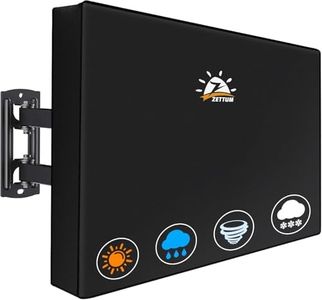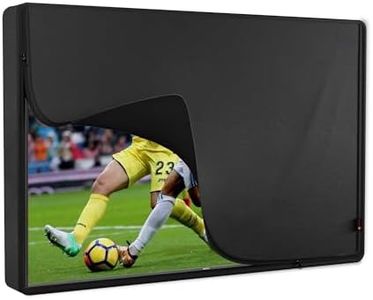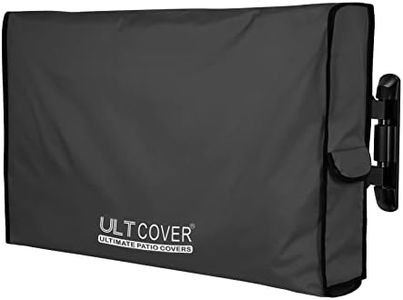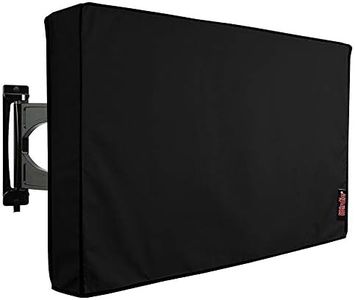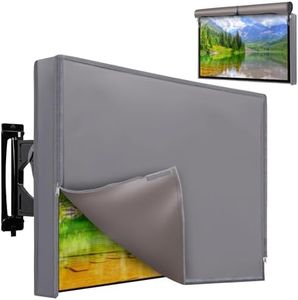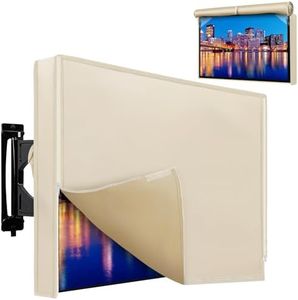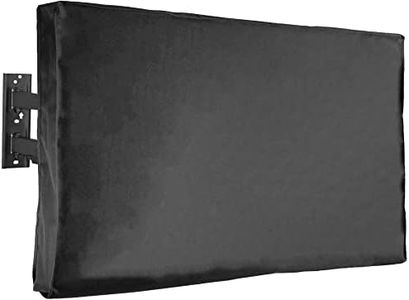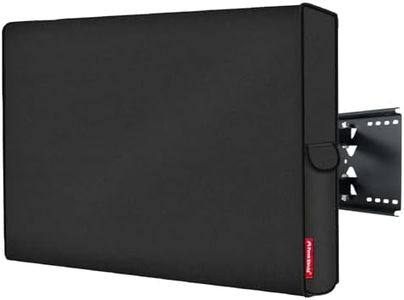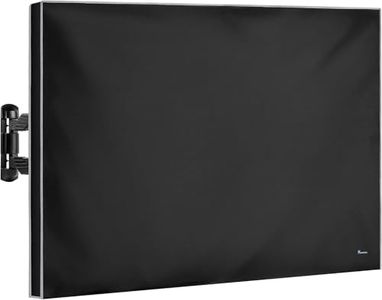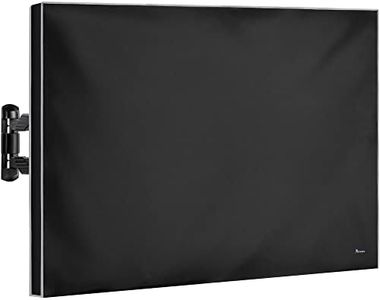We Use CookiesWe use cookies to enhance the security, performance,
functionality and for analytical and promotional activities. By continuing to browse this site you
are agreeing to our privacy policy
10 Best Outdoor TV Covers
From leading brands and best sellers available on the web.Buying Guide for the Best Outdoor TV Covers
When choosing an outdoor TV cover, the main purpose is to protect your TV from weather elements, dust, and possible physical damage. The right cover will ensure your TV stays safe and lasts longer, especially if exposed to sun, rain, or wind on patios, decks, or by the pool. Before shopping, ensure you know the size of your TV and where it will be positioned outdoors, as both factors will influence your choice.Material QualityMaterial quality refers to what the cover is made from—commonly polyester, vinyl, or a combination. This is important because a good material will effectively protect against rain, UV rays, dust, and mildew. Lightweight polyester is easy to handle but may offer less durability, while thicker vinyl is more resistant to water and physical damage. If your TV is exposed to harsh weather, go for a heavy-duty, waterproof material. For milder conditions, a lighter, breathable option might suffice.
WaterproofingWaterproofing ensures the cover can keep your TV dry during rain or high humidity. Some covers are water-resistant (they can handle light moisture), while others are fully waterproof (they block all water). For areas with heavy or frequent rain, choose a fully waterproof cover; if your outdoor area is sheltered, a water-resistant version could be enough. Always check if the seams and closures are also designed to prevent water from getting in.
UV ProtectionUV protection refers to the cover’s ability to block out damaging sunlight, which can age or discolor your TV. Some covers have UV-resistant coatings, while others don’t. If your TV sits in direct sunlight for much of the day, a high level of UV protection is important. For shaded or covered areas, this spec is less crucial. Look for UV protection ratings or mentions in the product details.
Size CompatibilitySize compatibility means how well the cover fits your specific TV dimensions, including width, height, and depth. A proper fit ensures full coverage, keeping out water and dust. Covers are usually marked by TV size ranges (like 40-43 inches), but checking your TV’s actual measurements is best. A too-large cover may flap or let in dust, while one that is too small won’t provide complete protection.
Closure SystemThe closure system is how you secure the cover—often Velcro, zippers, or snaps. Good closures keep the cover tightly sealed, preventing wind, dust, or bugs from getting inside. Velcro is easy to use but can wear over time, whereas zippers may provide a tighter, longer-lasting seal. If you frequently remove and replace the cover, choose a closure that's quick and simple for you to manage.
Accessory StorageSome covers feature extra pockets or compartments to store remote controls, cables, or other accessories. This is convenient if you regularly use these items outdoors and want to keep them protected. If you rarely use accessories outside or have another storage solution, this feature may be less important for your needs.
Mount CompatibilityMount compatibility refers to how well the cover fits if your TV is wall-mounted, on a stand, or hanging from a bracket. Some covers have openings or adjustable flaps to fit different mounting options. Make sure to choose a cover that matches how your TV is set up, to avoid disrupting the fit or the function of the cover.
Ease of CleaningEase of cleaning addresses how simple it is to keep the cover clean and free of debris. Some materials can be wiped down with a damp cloth, while others may require machine washing or special care. If your outdoor environment is dusty, has lots of pollen, or is close to trees, pick a cover that you can easily clean to help maintain the cover’s protective function.

